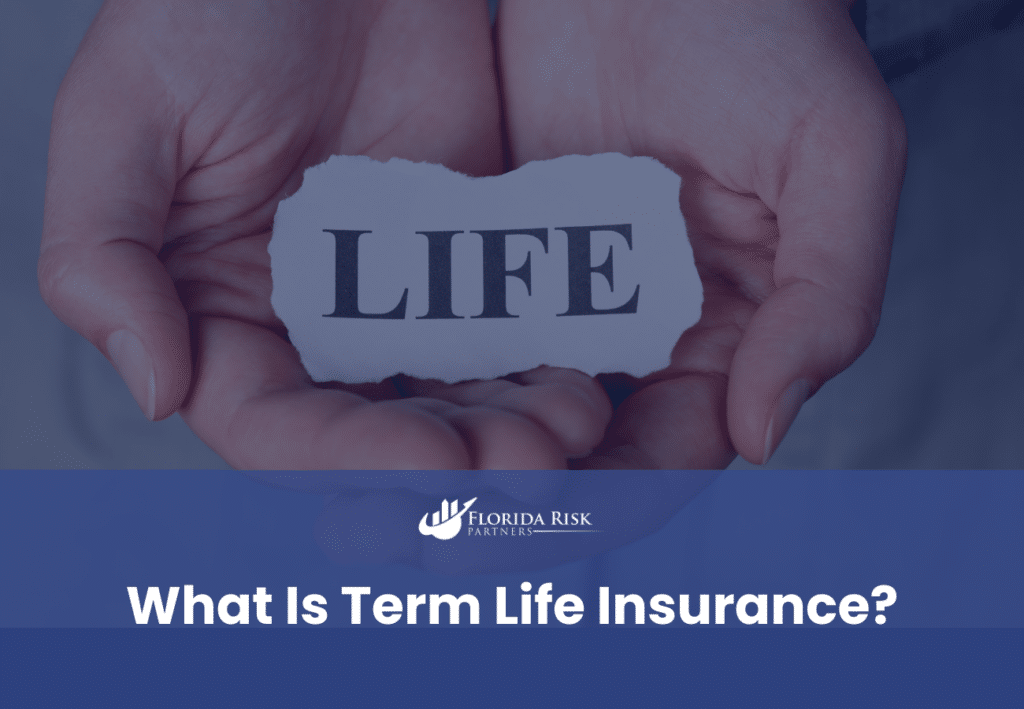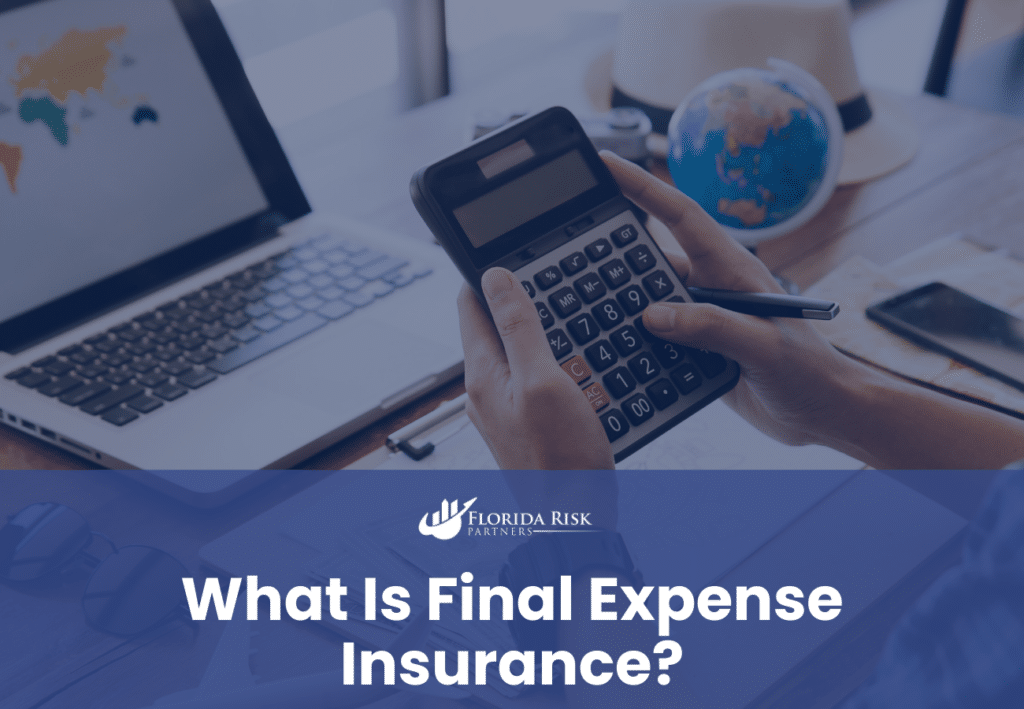-
Main Office: 1434 E. Bloomingdale Ave Valrico, FL 33596-6110
-
Phone: (888) 601-6660
-
Email: info@floridariskpartners.com

When it comes to life insurance, there’s no one-size-fits-all solution. With a variety of policies available, finding the right coverage can feel overwhelming. However, understanding the different types of life insurance and their unique benefits can simplify the process and help you make an informed decision that fits your goals and budget.
In this guide, we’ll break down the primary types of life insurance—term life, whole life, universal life, and final expense insurance—so you can determine which is the best fit for you and your loved ones.
Why Understanding Life Insurance Types Matters
Life insurance isn’t just a financial product; it’s a tool to protect your family, build wealth, and provide peace of mind. Choosing the wrong type of policy can result in inadequate coverage, unnecessary expenses, or missed opportunities to secure your financial future.
Each type of life insurance serves different purposes, from covering temporary needs like paying off a mortgage to offering lifelong protection with added savings potential. By understanding your options, you can match your policy to your specific life stage, responsibilities, and goals.
What Is Term Life Insurance?
Overview
Term life insurance is the simplest and most affordable type of life insurance. It provides coverage for a specific period, such as 10, 20, or 30 years. If you pass away during the term, the death benefit is paid to your beneficiaries. If the term ends before your death, the coverage expires without a payout unless you renew or convert the policy.
Best For
- Young families with limited budgets who need temporary protection.
- Individuals with specific financial obligations, like paying off a mortgage or funding college tuition.
Key Benefits
- Affordability: Term life premiums are significantly lower than permanent life insurance premiums.
- High Coverage Amounts: You can secure a substantial death benefit at a relatively low cost.
- Simplicity: Term life policies are straightforward, with no complicated investment components.
Considerations
- No cash value or savings component.
- Coverage ends after the term unless renewed or converted, often at a higher cost.

What Is Whole Life Insurance?
Overview
Whole life insurance is a type of permanent life insurance that provides coverage for your entire life, as long as premiums are paid. It also includes a cash value component that grows over time at a guaranteed rate.
Best For
- Individuals seeking lifelong protection and a built-in savings component.
- Those who want to leave a financial legacy for their heirs.
Key Benefits
- Lifetime Coverage: Your beneficiaries are guaranteed a payout, regardless of when you pass away.
- Cash Value Growth: The cash value grows over time, offering a tax-advantaged savings vehicle.
- Fixed Premiums: Your premiums remain consistent throughout the life of the policy.
Considerations
- Higher premiums compared to term life insurance.
- Less flexibility than universal life insurance.
What Is Universal Life Insurance?
Overview
Universal life insurance is another form of permanent life insurance but with added flexibility. You can adjust your premiums and death benefit to adapt to changing financial circumstances. The cash value grows based on market interest rates, offering the potential for higher returns.
Best For
- People with fluctuating incomes who want the ability to adjust their premiums.
- Those looking for permanent coverage with more growth potential than whole life insurance.
Key Benefits
- Flexible Premiums: You can increase, decrease, or even skip premiums (if sufficient cash value is available).
- Adjustable Death Benefit: Modify the death benefit as your needs change.
- Cash Value Growth: Offers higher growth potential compared to whole life insurance.
Considerations
- Requires active management and an understanding of market risks.
- Premiums may increase if cash value underperforms.
What Is Final Expense Insurance?
Overview
Final expense insurance, also known as burial insurance, is a small, affordable policy designed to cover end-of-life expenses, such as funeral costs and medical bills. These policies typically have lower death benefits, ranging from $10,000 to $50,000.
Best For
- Seniors who want to relieve their families of financial burdens associated with their passing.
- Individuals with no dependents but who want to ensure their final arrangements are covered.

Download our Complimentary Buyer’s Guide
Key Benefits
- Affordable Premiums: Tailored for those on fixed incomes.
- Simplified Underwriting: Often available without a medical exam.
- Focused Coverage: Specifically designed for end-of-life costs.
Considerations
- Limited death benefit amounts.
- Not ideal for broader financial needs like income replacement.
Anchor Text for SEO: Explore how final expense insurance works.
Comparing Types of Life Insurance
Here’s a side-by-side comparison of the major types of life insurance to help you determine which one aligns with your goals:
| Feature | Term Life | Whole Life | Universal Life | Final Expense |
| Coverage Duration | Fixed term (10-30 yrs) | Lifetime | Lifetime | Lifetime |
| Premiums | Low | High (fixed) | Flexible | Moderate |
| Cash Value | None | Grows Guaranteed | Grows with Market | None |
| Best For | Temporary Needs | Lifelong Protection | Flexibility and Growth | End-of-Life Costs |
How to Choose the Right Type for You
Selecting the right type of life insurance depends on your financial situation, goals, and responsibilities. Consider these steps:
- Identify Your Goals: Do you need temporary coverage for a specific debt or lifelong protection for your family?
- Evaluate Your Budget: Term life is more affordable for most families, but permanent policies offer additional benefits.
- Consider Your Life Stage: Young professionals often benefit from term life, while retirees may prefer final expense insurance.
Common Questions About Life Insurance Types
1. Can I convert a term policy to permanent insurance?
Yes, many term policies offer conversion options, allowing you to switch to whole or universal life insurance without a medical exam.
2. What happens if I outlive my term policy?
Your coverage expires unless you renew or convert it. Renewing typically comes with higher premiums.
3. How much life insurance do I need?
Use the DIME formula (Debt, Income, Mortgage, Education) to calculate your needs, or consult an insurance professional.
Final Thoughts
Choosing the right type of life insurance is a crucial step toward securing your family’s financial future. Whether you need the affordability of term life insurance, the lifelong protection of whole life, or the flexibility of universal life, there’s a policy designed to meet your needs.
Don’t wait until it’s too late. The sooner you start, the more options you’ll have and the lower your costs will be. To dive deeper into the world of life insurance and explore how to choose the best policy for your goals, download our free eBook today.
Call Us Or
Schedule an Appointment
Select an agent below to view our online calendars and select a day and time that works best for you or call us directly at 888-601-6660. When you use our online calendars, you will receive an email with more information.



